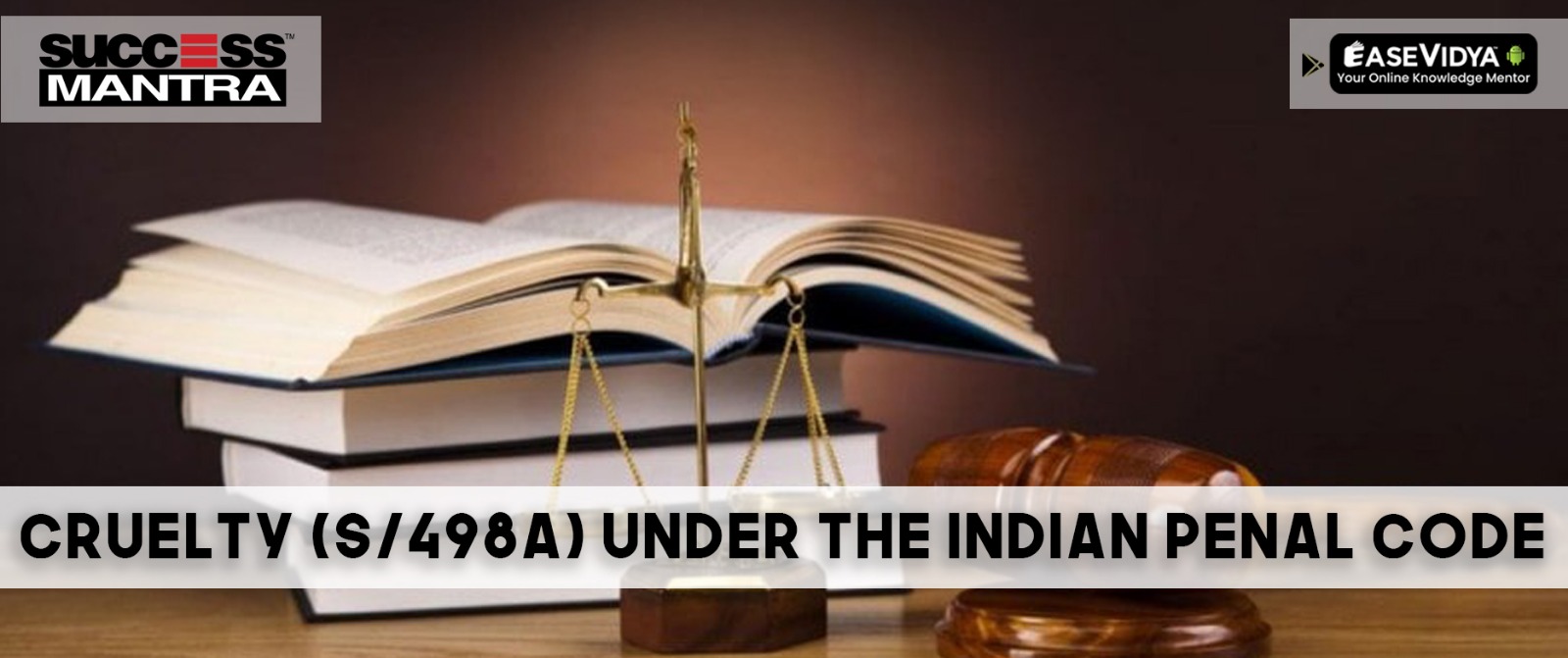
Cruelty under S/498A of the Indian Penal Code
Cruelty Section 498A of the Indian Penal Code: An In-depth Analysis and Landmark Case Laws
Introduction
Cruelty is a term that transcends geographical boundaries and is, unfortunately, a pervasive issue in many societies. In India, Section 498A of the Indian Penal Code (IPC) was enacted with the noble intention of protecting married women from harassment and cruelty at the hands of their husbands and in-laws. However, over time, it has become a subject of debate due to its misuse and unintended consequences. In this article, we will delve into the details of Section 498A, explore its historical context, and examine landmark case laws that have shaped its interpretation.
Historical Context
Section 498A of the IPC was introduced in 1983 as a response to the rising incidents of dowry-related violence and harassment faced by married women in India. It was enacted to provide a legal framework to combat cruelty against women in their matrimonial homes. The law aims to protect women from both physical and mental cruelty.
Understanding Section 498A
Section 498A of the IPC reads as follows:
"Whoever, being the husband or the relative of the husband of a woman, subjects her to cruelty shall be punished with imprisonment for a term which may extend to three years and shall also be liable to fine."
Key elements of Section 498A:
- The accused must be the husband or a relative of the husband.
- The cruelty can be physical or mental.
- The maximum punishment is three years of imprisonment and a fine.
Landmark Case Laws
Arnesh Kumar v. State of Bihar (2014):
- This case highlighted the misuse of Section 498A and the arbitrary arrests of husbands and their relatives based on mere allegations.
- The Supreme Court of India issued guidelines to prevent the automatic arrest of the accused under Section 498A. It emphasized the need for thorough investigation before making arrests.
Sushil Kumar Sharma v. Union of India (2005):
- In this case, the Supreme Court clarified that the term "cruelty" in Section 498A encompasses both physical and mental cruelty.
- Mental cruelty was described as behavior that causes such mental pain and suffering that it becomes impossible for the victim to live with the accused.
Inder Raj Malik v. Sumita Malik (1986):
- This case established that even the demand of dowry alone can amount to cruelty under Section 498A.
- The court held that persistent demands for dowry, if not met, can lead to mental harassment and cruelty.
Kaliyaperumal v. State of Tamil Nadu (2003):
- In this case, the court emphasized that the cruelty must be of such a nature that it drives the woman to commit suicide or causes grave injury to her life, limb, or health.
- It clarified that minor disputes or ordinary wear and tear of married life should not be covered under Section 498A.
Bhaskar Lal Sharma v. Monica (2009):
- This case discussed the importance of conducting a fair investigation in cases filed under Section 498A.
- The court held that mere registration of a case should not lead to the automatic arrest of the accused, and the police must gather evidence before making arrests.
Misuse and Challenges
While Section 498A serves a crucial purpose in protecting women from cruelty, it has faced criticism for its potential misuse. Some of the challenges associated with this section include:
- False Allegations: There have been instances where false allegations have been made under Section 498A to settle personal scores or gain an advantage in matrimonial disputes.
- Arbitrary Arrests: The provision has been used to arrest the accused without proper investigation, often leading to harassment of innocent parties.
- Delay in Legal Proceedings: The backlog of cases in Indian courts has resulted in lengthy legal battles, causing emotional and financial distress to the accused.
- Mediation and Counseling: Critics argue that mandatory mediation and counseling before arresting the accused may be more effective in resolving matrimonial disputes without criminalizing them.
Conclusion
Section 498A of the Indian Penal Code is a well-intentioned provision aimed at protecting married women from cruelty. However, its implementation has raised concerns about misuse and arbitrary arrests. Landmark case laws have played a crucial role in clarifying the scope and application of this section. To strike a balance between protecting women's rights and preventing misuse, it is essential for the legal system to ensure fair investigations, emphasize mediation, and consider alternatives to immediate arrests. Ultimately, the goal should be to provide women with genuine protection while upholding the principles of justice and due process.












xpfnom
<a href=https://mtw.ru/>аренда помещения под цод</a> или <a href=https://mtw.ru/>стоимость размещения сервера</a> https://mtw.ru/colocation размещение серверов в дата центре